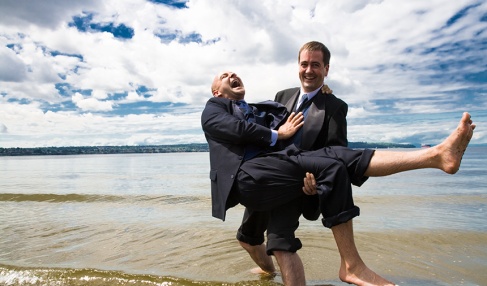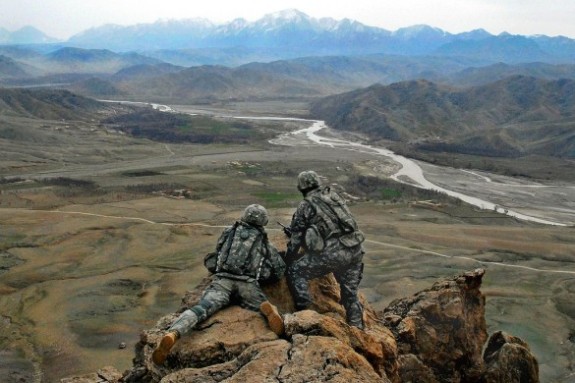
Since the days of Alexis de Toqueville, commentators on American society have tackled the complicated subject of racism in America. Two modern scholars, Glenn C. Loury and Walter E. Williams, have some things in common. Both are African-American men who grew up in the years prior to the civil rights movement. They both hold Ph.D. degrees in Economics, and both are professors at distinguished East Coast universities. But here the similarities end. Although neither are liberals, Laury is a moderate who favors social interventions such as affirmative action policies, and Williams is a dedicated libertarian who rejects affirmative action on principle. In their respective writings, “Affirmative Action Can’t Be Mended” and The Anatomy of Racial Inequality, Williams and Laury both address whether or not affirmative action is a valuable tool in combating racism and elevating the status of minorities in America. However, where Laury is able to discuss affirmative action as part of a comprehensive solution to a complicated problem, Williams makes a faulty case against the policy by cherry-picking examples of where the system inevitably fails certain individuals.
Affirmative action policies cannot purchase racial equality instantly. Rather, it is an investment which must be carefully managed with other resources in order to yield fruit down the road. Racism is a complicated issue that affects society at many different levels. Work needs to be done individually, as families, as neighborhoods, as cities, as states, and nationally in order to sow the seeds for an egalitarian future. The key word in a successful approach to race is nuance, which is also the best word to describe Laury’s book.
Laury’s writing style is unapologetically academic, which can mean that his ideas are not accessible to a general reader the way that Williams’ essay is. This is a shame, as understanding that racism is complicated is the first step to overcoming the problem. However, it may not be possible to tackle such a complicated issue without using complex language. His writing makes a strong case for working on eradicating the stigma associated with being black in America. Laury argues effectively that as a society we must have the courage to enact brave policies to right historical wrongs without making a mistaken association between elevating minorities and denigrating whites:
“[T]aking account of race while trying to mitigate the effects of this subordination, though perhaps ill-advised or unworkable in specific cases, cannot plausibly be seen as the moral equivalent of the discrimination that produced the subjugation of blacks in the first place. To see it that way would be to mire oneself in ahistorical, procedural formalism” (Laury 167).
Laury is not afraid to recognize that in certain, particular cases affirmative action may be improperly applied, or it may fail to achieve its goal of equal opportunity. However, as he explained above, we should not be afraid to use a remedy simply because it is not 100% effective, especially when it is highly useful. Conservative arguments against the funding of social programs such as affirmative action as a form of extortion used to fund bleeding-heart liberal largesse is a short-sighted view. Spending money on improving the education and social status of disadvantaged Americans actually saves money and creates wealth in the future in the form of lower crime and greater economic activity. This is especially true when interventions can be made to assist those born to disadvantage earlier in life.
Affirmative action is needed because racism can only be overcome when individual people are sufficiently exposed to diversity in a way that makes a substantial difference. Laury recognizes this and explains that affirmative action can take the abstract concept of human equality and make it easier to grasp by providing a working example:
Suppose one begins with the contrary premise, that there is no “black” or “white” way of thinking. Suppose further that conveying this view to one’s students is a high pedagogic goal. The students being keenly aware of their respective racial identities, some racial diversity may be required to achieve the pedagogic goal. Teaching that “not all blacks think alike” will be much easier when there are enough blacks around to show their diversity of thought.” (Laury 170)
Tokenism is not enough. Academic and professional settings will still continue to think of the thoughts of an individual black person as being representative of the whole so long as there are no other examples of black individuals present. Society cannot truly progress beyond racial stigma until opinions as vigorous and different as those of Williams and Laury can be seen to exist.
Williams does not lack credibility to write on a complicated economic topic such as the effectiveness of affirmative action. However, he does have obvious biases that make his argument seem like a foregone conclusion. “Affirmative Action Can’t Be Mended” was published by Cato Institute, a right-wing think tank founded by billionaire Charles Koch, who is best known for supporting political policies that benefit the wealthy and powerful at the expense of the most vulnerable members of American society. Williams regularly sits in as a guest host on the Rush Limbaugh radio program, and is a devotee of Ayn Rand’s philosophies, which argue that there is no point in offering help to the disadvantaged as such actions merely sap the resources of more capable individuals.
This bias is evident throughout Williams’ essay. Rather than analyzing the bigger question of whether or not affirmative action policies help Americans overall, Williams focuses on anecdotal cases where the question of fairness is raised, such as when a black or Hispanic employee is promoted over a better-qualified white worker. His anecdotal example of a white police officer in Memphis who was passed over for promotion while black co-workers were advanced is useless in determining the overall value of affirmative action policies. There could have been any number of reasons why the police officer was not advanced that had nothing to do with affirmative action. Even if this singular case was an example of how one individual was harmed, the error was in this particular implementation of affirmative action, not the policy itself.
Williams has a strong devotion to Libertarian principles of individual rights above all else, causing him to have a blind spot when it comes to the collective good. This attitude is best exemplified by his characterization of affirmative action as a method of punishing individual whites and giving their opportunities to blacks:
“If, as so often is the case, the justification for preferential treatment is to redress past grievances, how just is it to have a policy where a black of today is helped by punishing a white of today for what a white of yesterday did to a black of yesterday?” (Williams 176)
Williams also engages in pointless alarmism by claiming that “racial resentment” will result from targeted policies attempting to elevate minorities, as if there is only so much success to go around. In his view, there must be makers and takers, and it is not possible for society to be elevated collectively. Despite this fear mongering, Williams is unable to provide a single example of how such resentment would manifest. Instead, he engages in generalizations:
“But the dangers of racial preferences go beyond matters of justice and fair play. They lead to increased group polarization ranging from political backlash to mob violence and civil war as seen in other countries.” (Williams 177)
This quote, which seems to belong on a script for the Rush Limbaugh program rather than in the pages of a university textbook, can only cause confusion. To which countries is Williams referring? Of what nature will this political backlash be? To which incidents of mob violence is he referring? There are no examples of civil wars sparked entirely by racial preference. Even the United States Civil War was fought primarily over the issue of whether individual states or the Federal government had the final say over the implementation of the law. Williams’ conclusion is alarmist and unsupported. Williams fails to prove that affirmative action policies hinder the progress of racial equality.
It may not be completely fair to compare “Affirmative Action Can’t Be Mended” and The Anatomy of Racial Inequality because Williams was writing a short essay for a publication aimed at a general reader, and Laury wrote an entire book for an academic audience. For this reason some things, like the time to develop an argument and the ability to support theories, will leave the odds unfairly tilted toward Laury. But even if an affirmative-action style boost were given to Williams’ essay, his fundamental logic is still hopelessly flawed. Because the long-term, comprehensive view seems to offer a more promising solution to the problems of racism, Laury rather than Williams offers a better solution. In 1993 Stanley Fish, who compared racism to cancer and affirmative action to chemotherapy in his article “Reverse Racism or How the Pot Got to Call the Kettle Black”, Fish dismissed rejection of affirmative action based on isolated incidents of where certain white individuals suffered or certain minorities benefitted unfairly. Chemotherapy, he argued is just as invasive and disruptive to normal body function as cancer. A strong disease requires an aggressive remedy if the body of society is to be saved. Williams, in focusing only on a few examples of how affirmative action has failed certain adult individuals, is myopically attempting to reject an effective medicine simply because of a few bad side effects. Laury, on the other hand, recognizes that treatment of a disease as complicated and persistent as racism is a lengthy, complicated, and difficult process, and that although there is no one perfect, instant solution, programs such as affirmative action are an important part of the treatment.
Photo Credit


